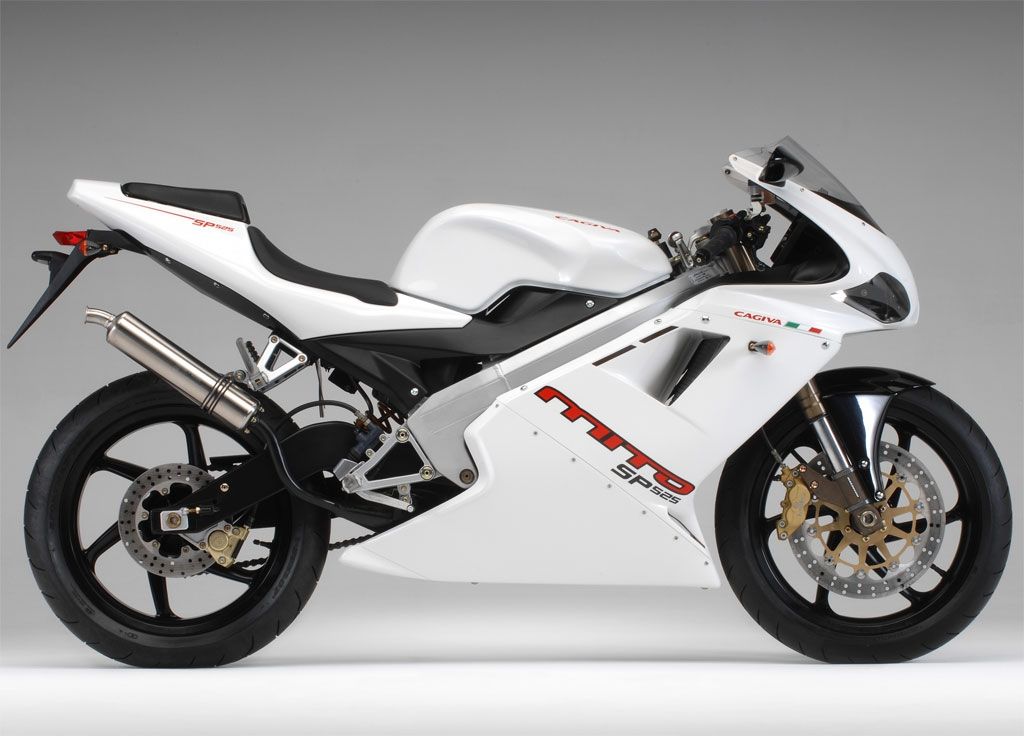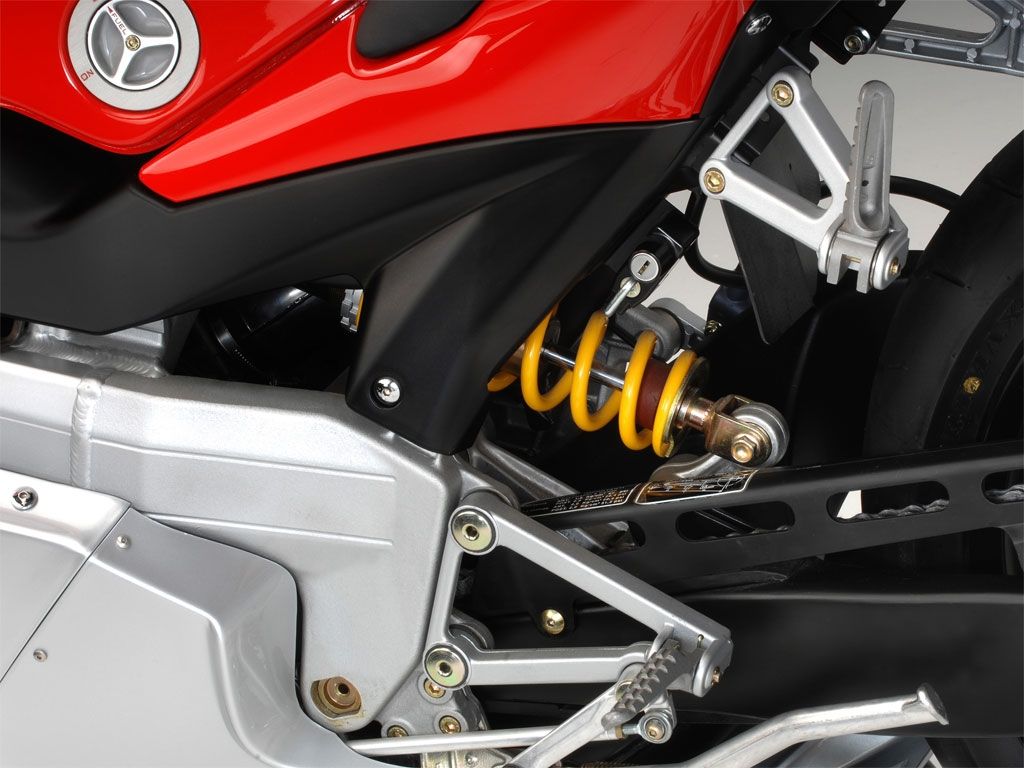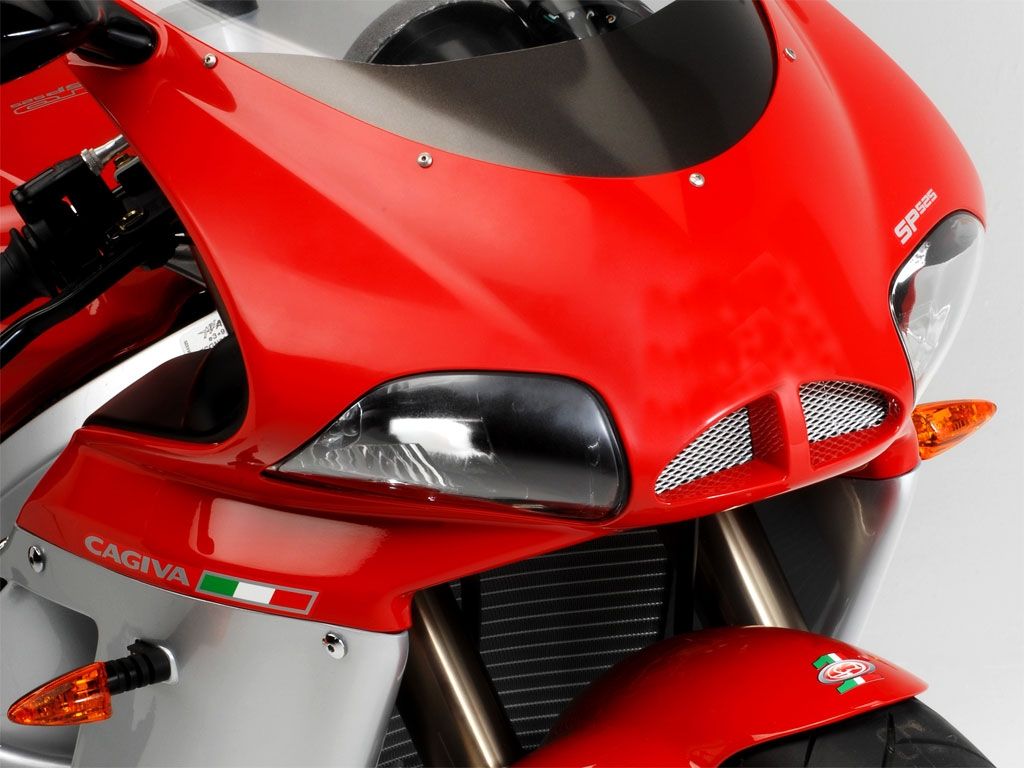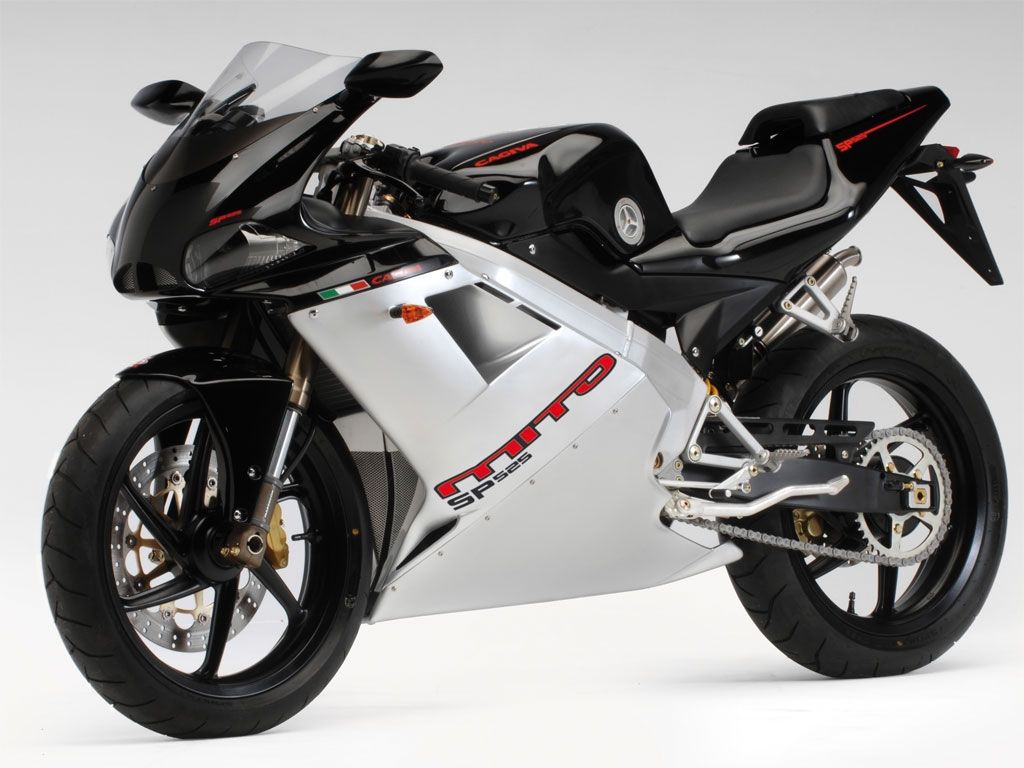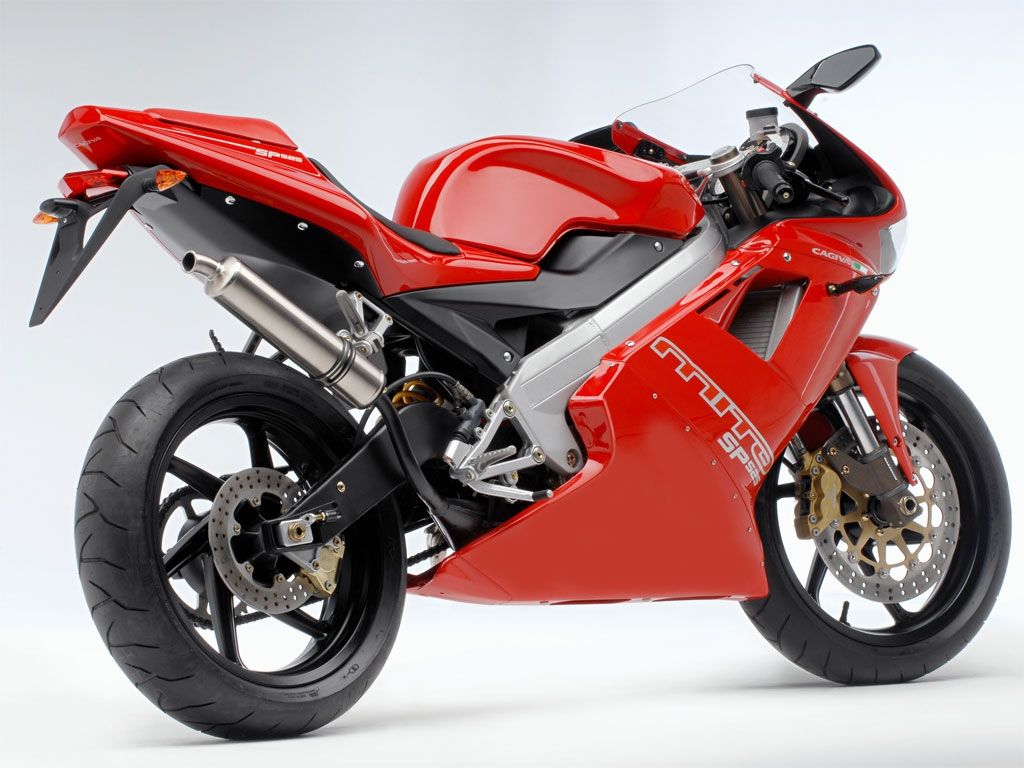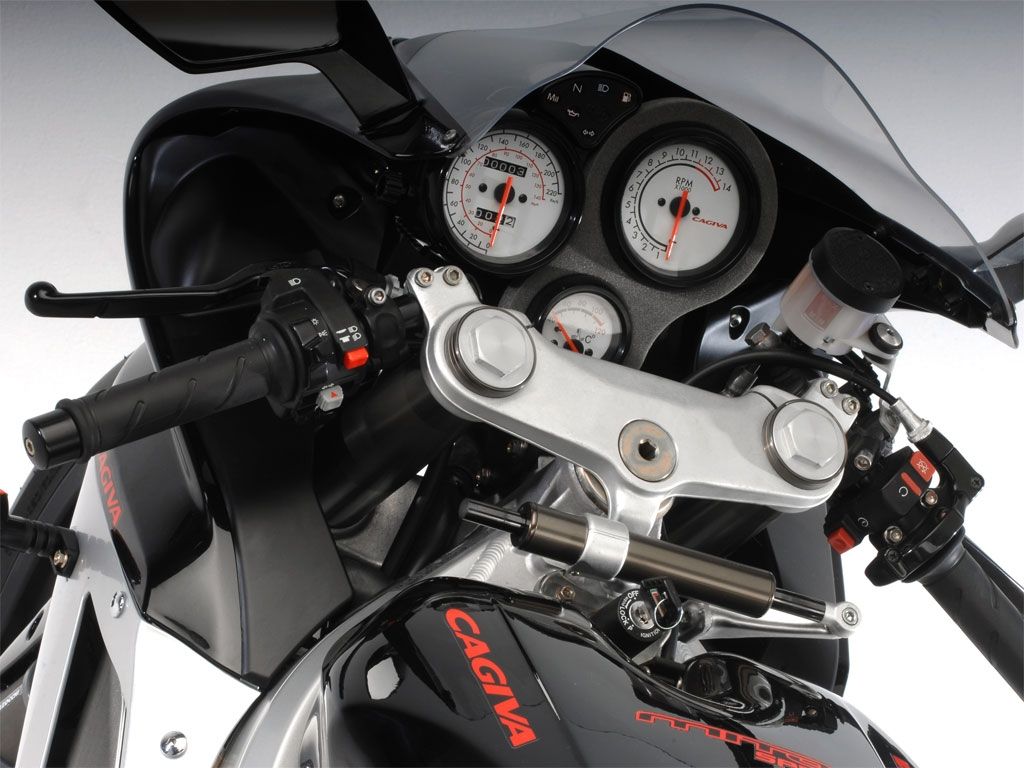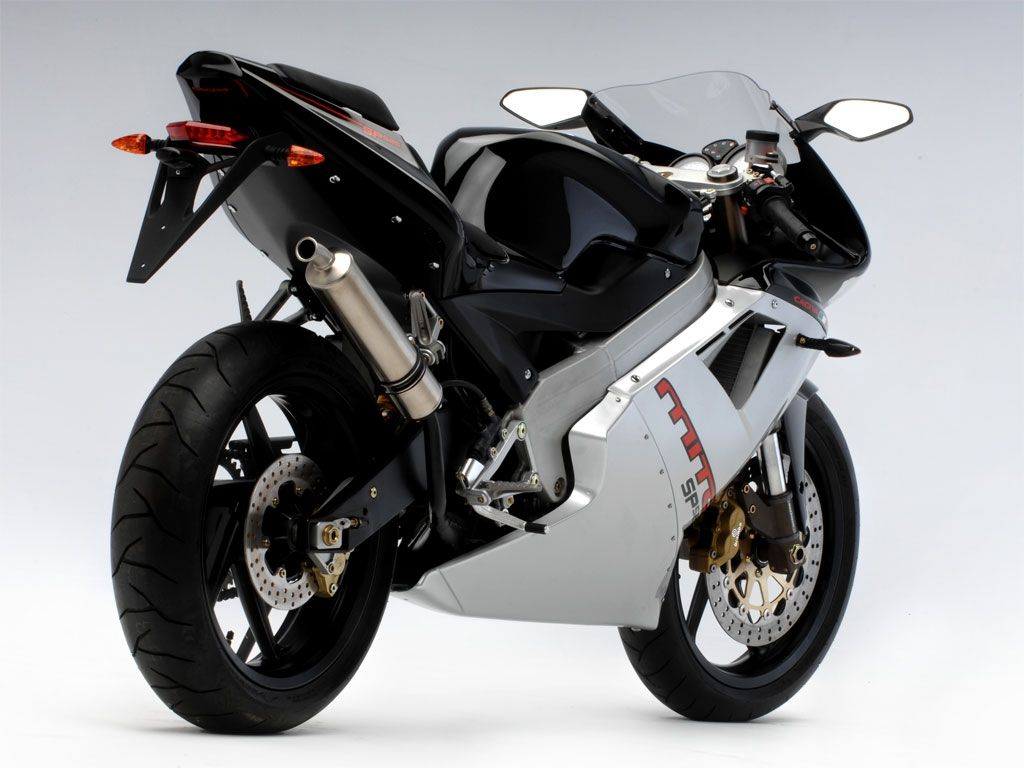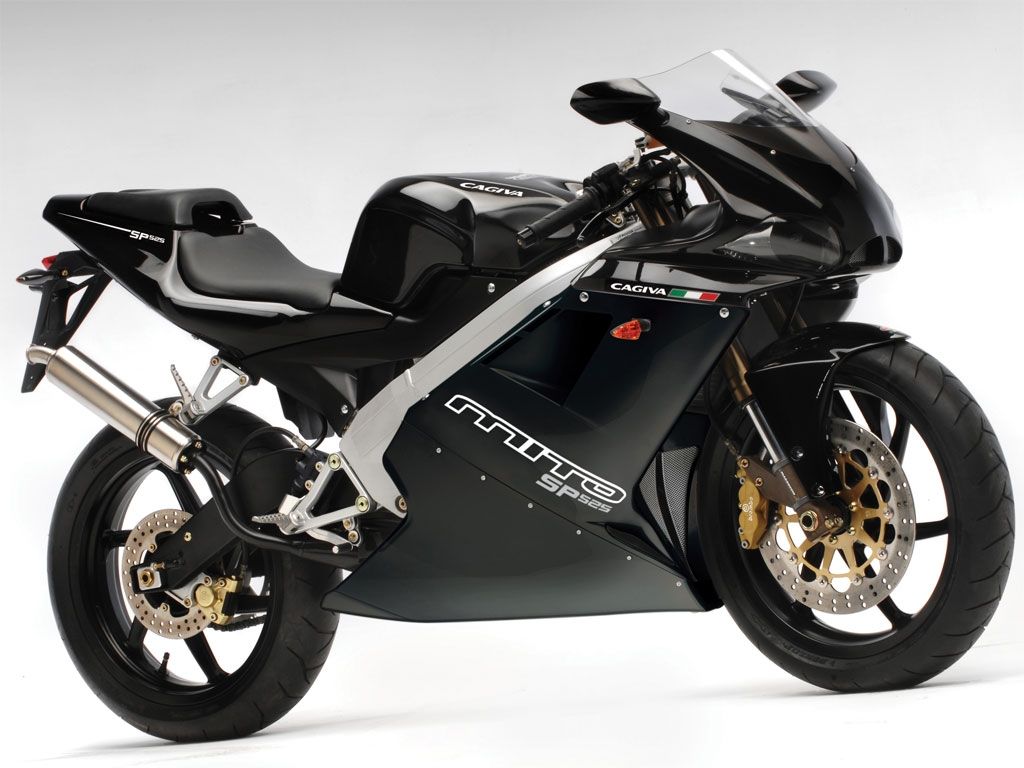The Cagiva Mito SP525 has a lot to love. For the starters it features a pretty sporty design language which inspires dynamism and confidence. The trim aerodynamics design was developed to get maximum penetration with the rider on the saddle and even the rear view mirrors were carefully designed to maximize the bike’s aerodynamics.
The ride is kept in check by a front 40 mm inverted fork which is combined with a rear Sachs shock absorber with adjustable pre-load.
The motorcycle is propelled by a 124.60 cc, single cylinder, two stroke engine which delivers a peak power of 12.07 HP (8.8 kW) at 9000 RPM and 11.00 Nm (1.1 kgf-m or 8.1 ft.lbs) of torque at 7500 RPM. The speed is kept under control by the Brembo Serie Oro braking system which consists of a 2-piston caliper that works on a 320mm front disc and a 230mm rear disc with tangential slots.
Hit the jump for more information on the 2013 Cagiva Mito SP525.
2012 Cagiva Mito SP525
- Make: Array
- Model: 2012 Cagiva Mito SP525
- Engine/Motor: Single cylinder, two-stroke
- Horsepower: 12 @ 9000
- Torque: 8 @ 7500
- Transmission: 6 speed
- [do not use] Vehicle Model: Array
Overview
Nowadays the Mito is “conservative” both in principle and design. It offers the sheer pleasure of riding a two-stroke, of hearing it scream through the gears like the glorious Cagiva 500, even if it has three cylinders less. When the racing bike won, Italy celebrated, especially when John Kocinsky came home third in the World Championship. It is exactly the recollection of those times when motorbikes were almost untamed beasts and more difficult to dominate than any of today’s machines, that made the name of the little Mito resurface. The SP525 with the 1 of “125” replaced by a 5 in memory of the legendary, much loved Cagiva 500.
Features
Semi Handlebars
Gripping the Mito's semi-handlebars puts the rider in touch with a true racing thoroughbred. A sensation confirmed by the many details inherited from its more than a decade of experience in the world of racing. All that is needed is a glance at the set of instruments, where the rev counter, water temperature gauge and service lights placed in an ultralight polyurethane support, or at the steering damper positioned parallel with the steering plate, a very valuable technical element found only in the more professional sport motorcycles .
Sloping Semi Handlebars
The Mito 125 has a sporty driving position, with sloping semi-handlebars that require pressure be placed on the forearms so the rider can get the vehicle's reactions and behaviour with utmost accuracy. In looking at it from the side, the trim aerodynamics design developed to get maximum penetration with the rider on the saddle is visibly evident. Even the rear view mirrors are made with a shape that contributes to reducing aerodynamic resistance.
Chassis
The value of the Mito 125's chassis is enhanced by being endowed with absolute quality. Proof is found in the powerful 40 mm inverted fork on the forecarriage, as well as in the rear Sachs shock absorber with adjustable pre-load. The picture is completed with the Brembo Serie Oro braking system made up of a 2-piston caliper that works on a 320mm front disc, whereas the 230mm rear disc features tangential slots.
Tha Tail
Here is the part of the Mito 525SP most familiar to anyone who has come across one of these bikes on the track. Enveloped in Cagiva red, a shade filled with victories and pride, the tail of the SP525 is made by CRD (Cagiva Research Development) so that aerodynamic flows can be controlled in such a way as to increase lift on the rear axis at top speed .
The Two Openings
The two openings in the cowl recapture the style that made John Kocinski's Cagiva C594 the most admired GP500 bike on the track. Like in its famous ancestor, these dynamic air ducts feed the air box, generating an air pressure that aids the engine's combustion at top speeds.
Wheels Pipes Swinging Arms
Forged aluminium wheels, boomerang swinging arm, racing exhaust system with carbon silender, aeronautic pipes. These are the distinctive signs of a motorcycle born for being put to the test with a chronometer, where every single detail can be fundamental when it comes to achieving absolute performance.
Specifications
|
Displacement |
124.60 ccm (7.60 cubic inches) |
|
Engine type |
Single cylinder, two-stroke |
|
Power |
12.07 HP (8.8 kW)) @ 9000 RPM |
|
Torque |
11.00 Nm (1.1 kgf-m or 8.1 ft.lbs) @ 7500 RPM |
|
Bore x stroke |
50.0 x 50.6 mm (2.0 x 2.0 inches) |
|
Fuel system |
Carburettor. Dell Ortho |
|
Ignition |
C.D.I. with variable spark advance |
|
Lubrication system |
Automatic mixer |
|
Cooling system |
Liquid |
|
Gearbox |
6-speed |
|
Final drive |
Chain |
|
Clutch |
Multiplate in oil bath |
|
Frame type |
Aluminium Profi frame |
|
Rake (fork angle) |
65.0° |
|
Trail |
98 mm (3.9 inches) |
|
Front suspension |
Upside-down Marzocchi forks. |
|
Rear suspension |
Adjustable rebound and damping shock absorber. |
|
Front tyre dimensions |
110/70-ZR17 |
|
Rear tyre dimensions |
150/60-ZR17 |
|
Front brakes |
Double disc. 4-piston |
|
Front brakes diameter |
320 mm (12.6 inches) |
|
Rear brakes |
Single disc. 2-piston |
|
Rear brakes diameter |
230 mm (9.1 inches) |
|
Wheels |
6-spoke black wheels |
|
Dry weight |
129.0 kg (284.4 pounds) |
|
Power/weight ratio |
0.0936 HP/kg |
|
Seat height |
760 mm (29.9 inches) If adjustable, lowest setting. |
|
Overall length |
1,980 mm (78.0 inches) |
|
Ground clearance |
150 mm (5.9 inches) |
|
Wheelbase |
1,375 mm (54.1 inches) |
|
Fuel capacity |
14.00 litres (3.70 gallons) |
|
Oil capacity |
0.80 litres (0.05 quarts) |
|
Starter |
Electric |
|
Instruments |
Analogue |
|
Electrical |
12 V |
|
Color options |
Red, white, red/gray, black |


